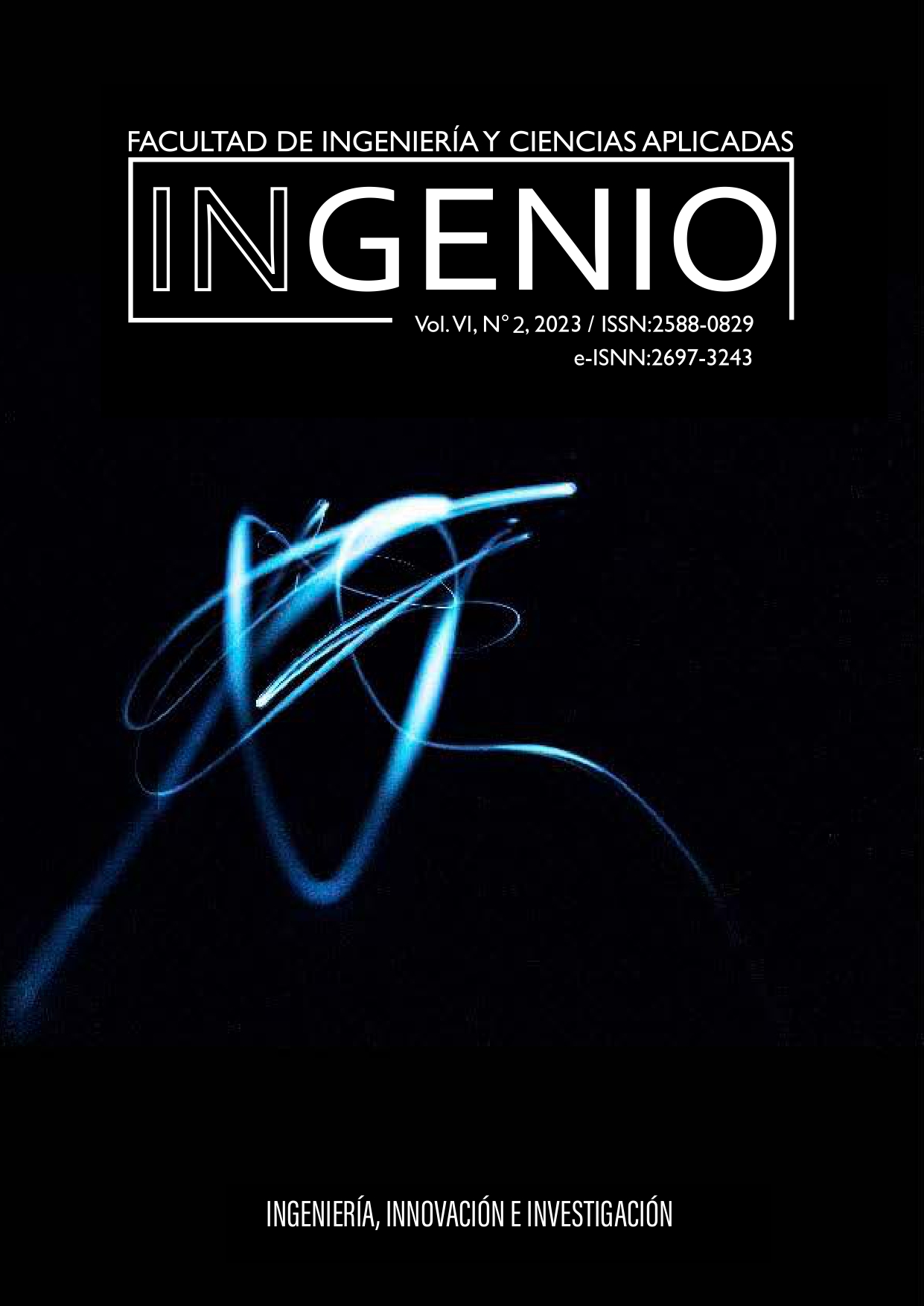Validation of a Mathematics Test Applied to Students Starting Higher Education, Using the Rasch Model
Main Article Content
Abstract
In this test, the Rasch model was applied for the calibration of a valid and reliable assessment instrument. Between the periods 2020-I to 2022-I the diagnostic test consisted of a 20-item mathematics questionnaire taken prior to a level zero course at “Instituto Superior Universitario Central Técnico”. With this test, 695 students had been evaluated in the periods 2020-I, 2020-II, 2021-I and 2021-II; subsequently, the items of the evaluation instrument that were not described by the Rasch model were identified with a reliability of 65%, which were corrected. Finally, with the new corrected test, another 100 students had been evaluated in the period 2022-I, obtaining a test reliability of 90%. From these results, the characteristic curves of these items were generated, applying Pearson and chi-square distributions, those that did not fit the model were identified. Using the parameters obtained by the Rasch model, the grades were simulated and compared with the actual grades obtained by the students. Thus, the model has made it possible to identify 133 students with a low level of ability, of which 119 correspond to the original test and 14 to the corrected test. R software was used for the statistical analysis.
Downloads
Metrics
Article Details

This work is licensed under a Creative Commons Attribution-NonCommercial-NoDerivatives 4.0 International License.
References
ISUCT, “Informe de gestión administrativa y académica- Rendición de cuentas 2020,” p. 105, 2020, [Online]. Available: https://istct.edu.ec/portal/nuevo/wp-content/uploads/sites/2/2021/06/Rendición-de-cuentas-2020-V002.pdf
T. M. Bechger, G. Maris, H. H. F. M. Verstralen, and A. A. Béguin, “Using Classical Test Theory in Combination With Item Response Theory,” Appl Psychol Meas, vol. 27, no. 5, pp. 319–334, Sep. 2003, doi: 10.1177/0146621603257518.
J. Muñiz, “Las Teoría de los Tests: TCT y TRI,” Papeles del Psicólogo, vol. 31, no. 1, pp. 57–66, 2010, [Online]. Available: http://www.papelesdelpsicologo.es/pdf/1796.pdf
R. L. Brennan, “Generalizability theory and classical test theory,” Applied Measurement in Education, vol. 24, no. 1, pp. 1–21, Jan. 2011, doi: 10.1080/08957347.2011.532417.
J. M. Francese Martínez, Medición y Evaluación Educativa, 1st ed. Arco Libros - La Muralla, S.L, 2008.
G. H. Fischer and I. W. Molenaar, Rasch Models - Foundations, Recent Developments, and Applications. New York: Springer-Verlag, 1995. doi: 10.1007/978-1-4612-4230-7.
N. Cortada de Kohan, “Teoría de Respuesta al Ítem: Supuestos Básicos,” Revista Evaluar, vol. 4, no. 1, pp. 95–110, 2004, doi: 10.35670/1667-4545.v4.n1.600.
K. Jiménez Alfaro and E. Montero Rojas, “Aplicación del modelo de Rasch, en el análisis psicométrico de una prueba de diagnóstico en matemática,” Revista Digital: Matemática, Educación e Internet, vol. 13, no. 1, pp. 1–24, 2013, doi: 10.18845/rdmei.v13i1.1628.
I. Leenen, “Virtudes y limitaciones de la teoría de respuesta al ítem para la evaluación educativa en las ciencias médicas,” Investigación en Educación Médica, vol. 3, no. 9, pp. 40–55, 2014, doi: 10.1016/s2007-5057(14)72724-3.
E. San Martín, “Modelos Rasch: ¿ cuán (in-)coherentemente son presentados y utilizados ?,” Actualidades en Psicología, vol. 29, no. 119, pp. 91–102, 2015, doi: http://dx.doi.org/10.15517ap.v29i119.18911.
A. Atikah, S. Sudiyatno, A. Rahim, and M. Marlina, “Assessing the item of final assessment mathematics test of junior high school using Rasch model,” Jurnal Elemen, vol. 8, no. 1, pp. 117–130, 2022, doi: 10.29408/jel.v8i1.4482.
A. Rahim and H. Haryanto, “Implementation of Item Response Theory (IRT) Rasch Model in Quality Analysis of Final Exam Tests in Mathematics,” Journal of Educational Research and Evaluation, vol. 10, no. 2, pp. 57–65, 2021, doi: 10.15294/jere.v10i2.51802.
S. Rakkapao, S. Prasitpong, and K. Arayathanitkul, “Analysis test of understanding of vectors with the three-parameter logistic model of item response theory and item response curves technique,” Phys Rev Phys Educ Res, vol. 12, no. 2, pp. 1–10, 2016, doi: 10.1103/PhysRevPhysEducRes.12.020135.
T. Verguts, P. De Boeck, and G. Storms, “Analyzing experimental data using the Rasch model,” Behavior Research Methods, Instruments, and Computers, vol. 30, no. 3, pp. 501–505, 1998, doi: 10.3758/BF03200683.
K. S. Sidhu, New approaches to measurement and evaluation. Sterling Publishers Pvt. Ltd., 2005.
A. Freiberg Hoffmann, J. B. Stover, G. De la Iglesia, and M. Fernández Liporace, “Correlaciones Policóricas Y Tetracóricas En Estudios Factoriales Exploratorios Y Confirmatorios,” Ciencias Psicológicas, vol. 7, no. 2, pp. 151–164, 2013, doi: 10.22235/cp.v7i1.1057.
T. Nielsen, “The specific academic learning self-efficacy and the specific academic exam self-efficacy scales: construct and criterion validity revisited using Rasch models,” Cogent Education, vol. 7, no. 1, 2020, doi: 10.1080/2331186X.2020.1840009.
F. Flores, M. Sánchez, and A. Martínez, “Modelo de predicción del rendimiento académico de los estudiantes del ciclo básico de la carrera de medicina a partir de la evaluación del desempeño docente,” Revista Mexicana de Investigacion Educativa, vol. 21, no. 70, pp. 975–991, 2016, [Online]. Available: https://www.redalyc.org/pdf/140/14046162015.pdf
S. Celis, L. Moreno, P. Poblete, J. Villanueva, and R. Weber, “Un modelo analítico para la predicción del rendimiento académico de estudiantes de ingeniería,” Revista Ingeniería de Sistemas, no. Septiembre 2015, pp. 5–24, 2015, [Online]. Available: https://www.researchgate.net/publication/292982515_Un_modelo_analitico_para_la_prediccion_del_rendimiento_academico_de_estudiantes_de_ingenieria
M. Muntazhimah and R. Wahyuni, “The Development and Validation of Mathematical Reflective Thinking Test for Prospective Mathematics Teachers Using the Rasch Model,” Jurnal Elemen, vol. 8, no. 1, pp. 175–186, 2022, doi: 10.29408/jel.v8i1.3981.
T. G. Bond, Z. Yan, and M. Heene, Applying the Rasch Model- Fundamental Measurement in the Human Sciences, 4th ed. New York and London: Routledge, 2013. doi: 10.4324/9781410614575.
E. Backhoff, M. J. González Montesinos, Y. Pérez Garibay, and M. F. Ferreyra, “Uso del Modelo de Crédito Parcial de Rasch y Masters en la Evaluación de Competencias Matemáticas,” REICE. Revista Iberoamericana sobre Calidad, Eficacia y Cambio en Educación, vol. 20, no. 1, pp. 41–55, 2022, doi: 10.15366/reice2022.20.1.003.





